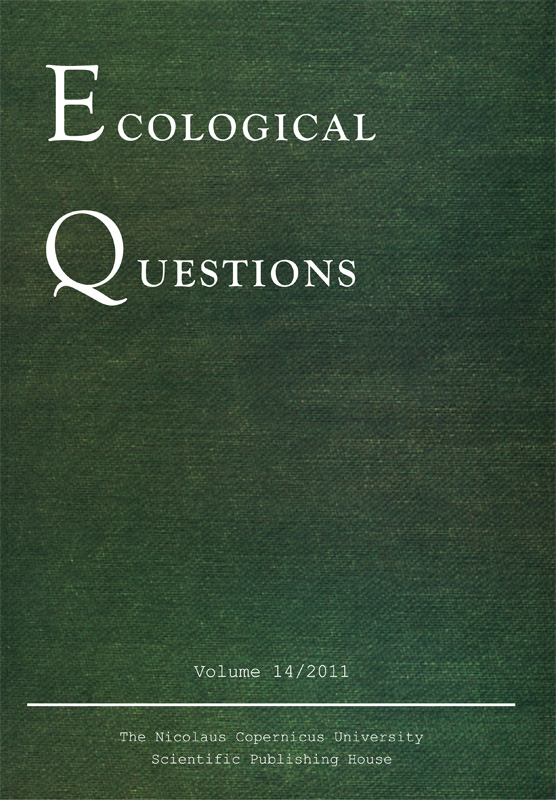Spatial Patterns and Dynamics of some Halophytic Plants in the Hortobágy Region (Eastern Hungary)
DOI:
https://doi.org/10.12775/v10090-011-0001-zKeywords
Hortobágy, halophytes, frequency, spatial patternAbstract
Frequencies of 44 halophytic plants within 10 study sites in the Hortobágy were established, and the species were sorted by degree of salt tolerance. Number and frequency of β-mezohalin, α-mezohalin and oligohalin species was found higher than species number and frequencies of eu-, polihalin and hipersalin species. This shows, that the extremely salt-stress as environmental factor is rare on the Hortobágy.References
Borhidi A., 1993, A magyar flóra szociális magatartás típusai természetességi és relatív ökológiai értékszámai [Social behaviour types of the Hungarian flora, its naturalness and relative ecological indicator values in Hungarian], JPTE, Növénytani Tanszék, Pécs.
Ellenberg H., Weber H. E., Düll R., Wirth V., Werner W. & Paulissen D., 1992, Zeigerwerte von Pflanzen in Mitteleuropa, Scripta Geobotanica 18: 44.
Marosi S. & Somogyi S., (eds.), 1990, Magyarország kistájainak katasztere [Cadastre of Hungarian landscapes - in Hungarian], MTA Földrajztudományi Kutató Intézet, Budapest.
Molnár Zs. & Borhidi A., 2003, Hungarian alkali vegetation, Origins, landscape history syntaxonomy, conservation, Phytocoenologia 33 (2-3): 377-408. DOI: http://dx.doi.org/10.1127/0340-269X/2003/0033-0377
Novák T. & Matus G., 2000, Lepidium crassifolium W. et K. a Hortobágyon, Kitaibelia 5 (1): 189-194.
Szabolcs I., 1981, Salt affected Soils in the Hungarian Danube and Tisza Valleys, Agrokémia és talajtan 30 (suppl.): 213-218.
Szujkó-Lacza J., (ed.), 1982, The Flora of the Hortobágy National Park, Akadémiai Kiadó, Budapest.
Downloads
Published
How to Cite
Issue
Section
Stats
Number of views and downloads: 511
Number of citations: 0



